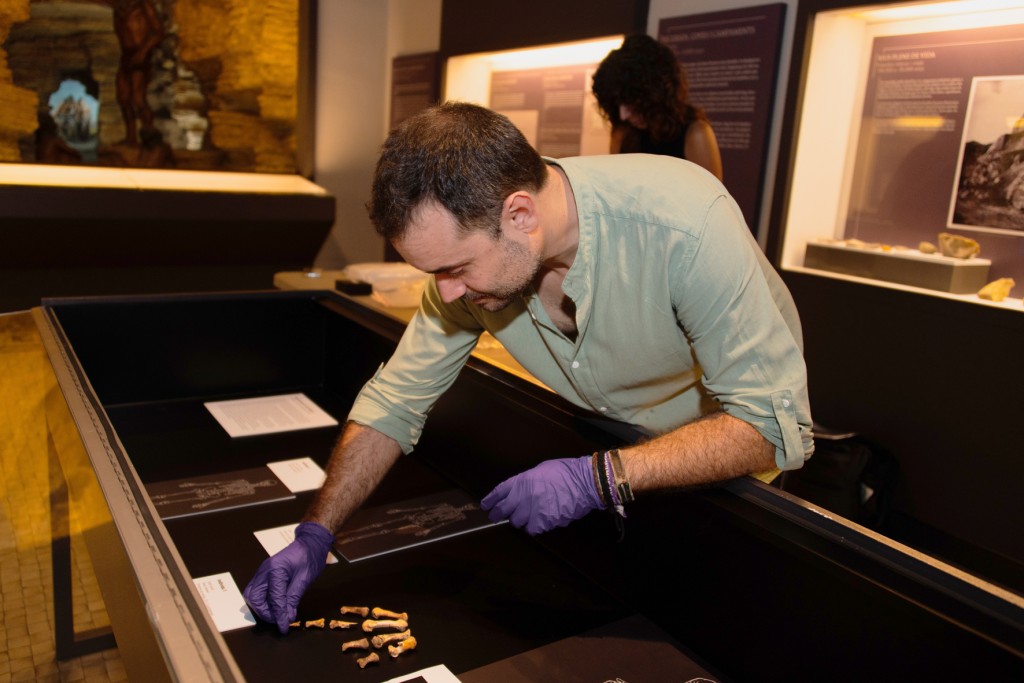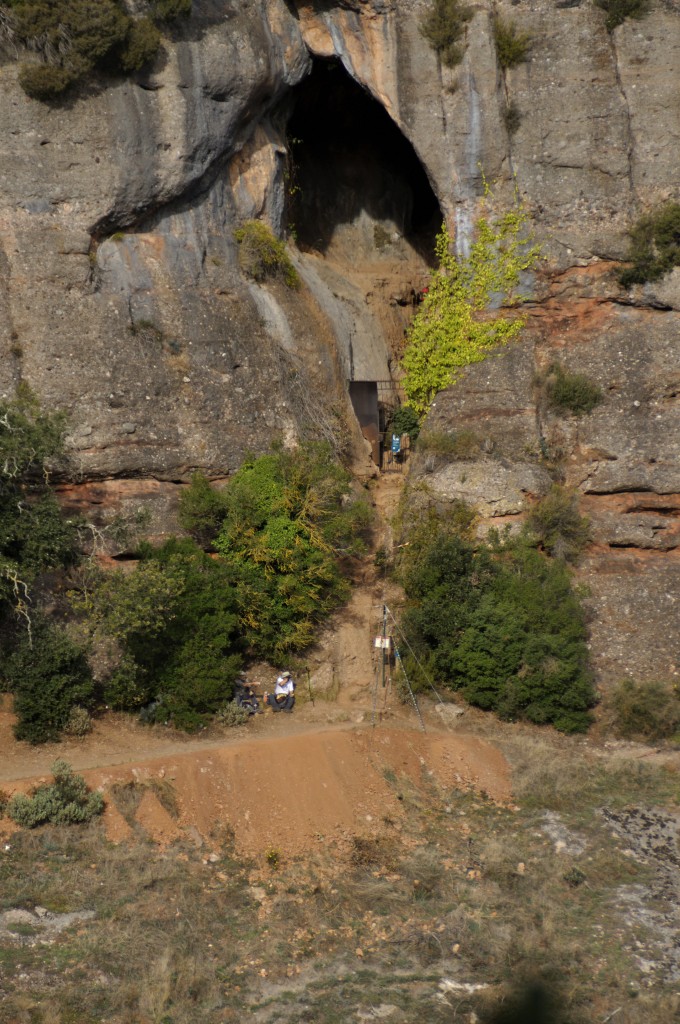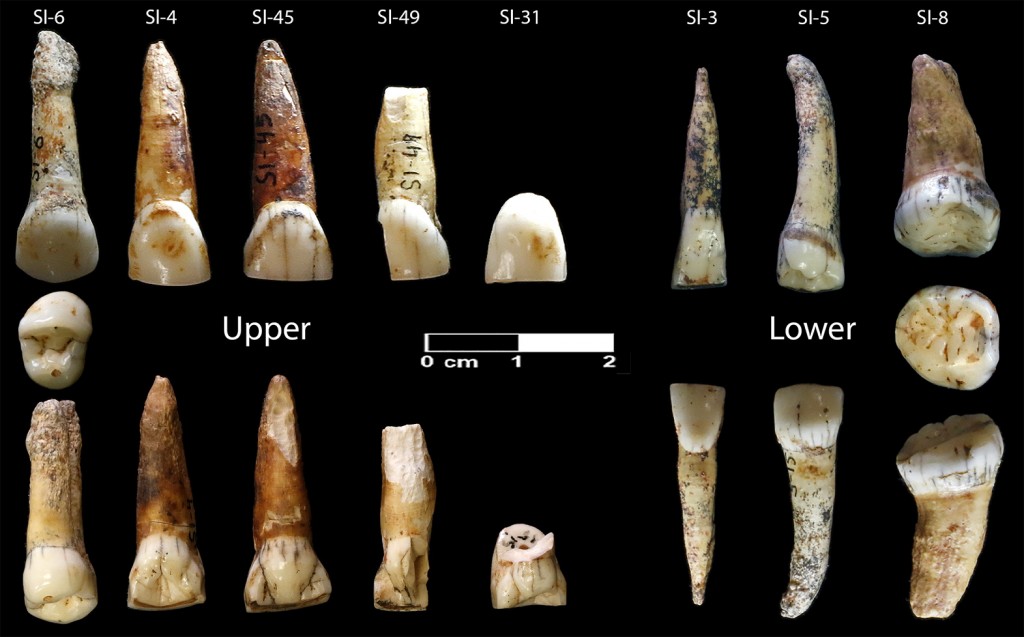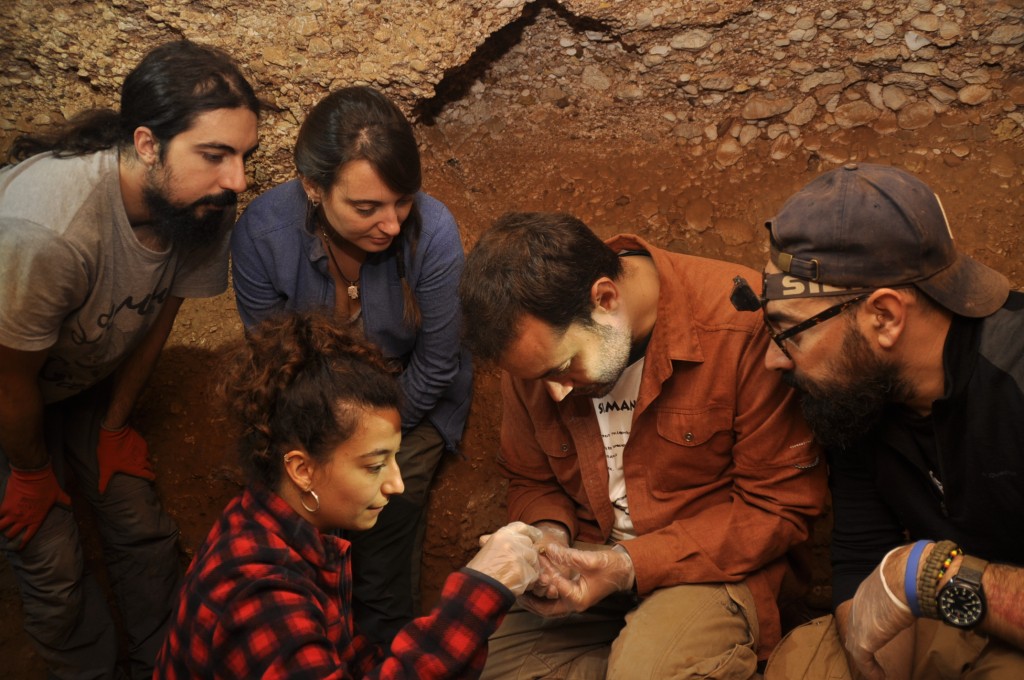19/09/2023
Neanderthal remains more than 50,000 years old identified in the Simanya cave
Consisting of 54 pieces from at least three individuals, this is the most important Neanderthal collection in Catalonia and one of the most important in the Iberian Peninsula

Consisting of 54 pieces from at least three individuals, this is the most important Neanderthal collection in Catalonia and one of the most important in the Iberian Peninsula
The site at the Simanya cave, in the Natural Park of Sant Llorenç del Munt i de l’Obac, has witnessed the most important discovery of Neanderthal remains in Catalonia and one of the most important in the Iberian Peninsula: 54 Neanderthal artefacts, more than 50,000 years old, from at least three individuals.
The scientific results were presented last Tuesday at noon and, at the same time, published in the prestigious international scientific journal Frontiers in Earth Science in the article “New assemblage of late Neanderthal remains from Cova Simanya (NE Iberia)”. The leading researchers were Juan Ignacio Morales, from the Catalan Institute of Human Paleoecology and Social Evolution (IPHES-BÚSQUEDA); Artur Cebrià, from the Seminar for Prehistoric Studies and Research at the University of Barcelona (SERP-UB), and Antonio Rosas, from the National Museum of Natural Sciences-Spanish National Research Council (MNCN-CSIC). Also taking part were other researchers from these three institutions, and the Universitat Rovira i Virgili, the Autonomous University of Madrid, the University of Santiago de Compostela, the University of Alicante, the Institute of Evolutionary Biology of the Pompeu Fabra University-CSIC, the Catalan Institute of Palaeontology, the Institute for Advanced Study (MIAS), the University of Bologna and the Museum of Natural Sciences of Barcelona. The presentation ceremony was attended by those responsible for the research, who presented the remains found and contextualised the site, and by representatives of the institutions involved, the Department of Culture of the Catalan Government, the Barcelona Provincial Council and the Archaeology Museum of Catalonia.
The Simanya cave, a unique enclave for understanding the Neanderthals
The Simanya cave, located in Sant Llorenç Savall, in the heart of the Sant Llorenç del Munt i de l’Obac Natural Park, has more than 300 metres of caves and, due to its accessibility, has been one of the most visited caves in Catalonia. “One of the objectives of the Sant Llorenç del Munt i de l’Obac Natural Park is to put visitors in touch with the natural and geological environment and, at the same time, to provide a space for research,” says the park’s director, Àngel Miño. “The geomorphology of the park, with its peaks, ravines, walls, chasms and caves, is one of the unique features of the area. The Simanya is one of the best-known caves in the Sant Llorenç massif, and guided tours for visitors are organised by the Barcelona Provincial Council,” explains Miño.

The study of a collection of materials discovered in 1978-79 and deposited at the Archaeology Museum of Catalonia, alerted researchers to the presence of Neanderthal remains in the Simanya cave. This encouraged researchers to initiate a research project in 2020 with the main objectives of studying the human fossil remains and their archaeopalaeontological context. At the same time, recent excavations have reconstructed the origin and history of the Neanderthal remains, and recovered others. Likewise, the stone tools recovered, the animal bones processed by the Neanderthals and the bonfires documented suggest that the Simanya cave was a significant enclave for the Middle Palaeolithic populations.
The remains are from three individuals: an adult, probably a woman; a young person of about 11 or 12 years of age; and a child of about 7-8 years of age. “Of all of them, the adult individual stands out. The remains of both arms have been identified, including a whole humerus, a practically complete hand, the feet, vertebrae and ribs,” says Antonio Rosas, director of the Paleoanthropology Group of the MNCN-CSIC. Up to ten teeth and a jaw fragment have also been identified. Two of the teeth belong to the young individual and the remaining eight may be from the adult, although “we cannot rule the possibility that they belong to other individuals,” he adds.
The findings have unequivocal anatomical features that allow them to be clearly ascribed to Neanderthals. They not only help to differentiate the individuals from other species of the genus Homo, but also shed light on the phylogeography of the Neanderthals who populated Europe before the arrival of our species, the Homo sapiens. According to Rosas, “the fossils from the Cova Simanya will help to clarify the role played by the Iberian Peninsula in the complex evolutionary history of the Neanderthals”. In this regard, the researcher and one of the leading international experts on Neanderthals today explains that this extinct species has several lineages but, at the moment, the reasons for how and where they originated are still unknown. “Iberia and the Simanya cave will have a lot to say in this respect,” he predicts.

“The first datings indicate that the Neanderthals were present in the Simanya cave before than the Carbon 14 limit, i.e. more than 50,000 years ago,” says Juan Ignacio Morales, co-director of the excavations and researcher at IPHES-BÚSQUEDA and SERP-UB. “Alternative dating techniques are currently being developed that should allow us to determine the age of the remains with greater precision,” says the researcher.
Fieldwork has shown that the cave was not only occupied by the Neanderthals but also served as a refuge for hibernation for both the brown bear and the cave bear until at least 42,000 years ago. According to Morales, much later the cave was used sporadically from the Neolithic until much more recent times.
Central Catalonia, a key territory for the Neanderthals
The proximity of the Simanya cave to other Middle Palaeolithic archaeological sites such as the Cuevas del Charco (Moià), Abric Romero (Capellades) and the Cueva Grande de Collbató, clearly shows that Central Catalonia was a key territory for the activities and settlements of the Neanderthals during the Upper Pleistocene.
In the forthcoming excavation campaigns, the research team plans to continue with the work in the Simanya karst complex, including the Cueva del Triángulo and the Cueva de la Canal, just 50 metres away, with the aim of gaining greater insight into the prehistoric settlement in this key area.
From an institutional point of view, these results are the product of the synergies and coordination of the Archaeological and Palaeontological Heritage Service of the Department of Culture of the Catalan Government, and the San Llorenç del Munt i de l’Obac Natural Park of the Archaeological Museum of Catalonia and the Barcelona Provincial Council.

Tour of the remains at the MAC and guided tours of the Simanya cave
The remains will be on display at the Museum of Archaeology of Catalonia for a month. They will then be returned to the research team until the research is completed, at which point they will be returned to the MAC.
The San Llorenç del Munt i de l’Obac Natural Park of the Barcelona Provincial Council organises guided tours of the Simanya cave every Saturday, on public holidays and the last Sunday of each month. The tours are open to the general public and those interested need to register beforehand.
The archaeological research at the Simanya cave is part of the four-year project ARQ001SOL-172-2022 “Cultural transitions during the Pleistocene and Holocene in the coastal and pre-coastal area of Catalonia”, linked to the Seminar of Prehistoric Studies and Research of the UB, and approved by the Department of Culture of the Catalan Government; the project PID2021-122356NB-I00 of the National Museum of Natural Sciences-CSIC; and the Palarq Foundation. It has also been supported by two SERP projects, the Ministry project PID2020-113960 and the Quality Research Group SGR-00337 of the Catalan Government. The excavations are also funded by the San Llorenç del Munt i de l’Obac Natural Park and the Barcelona Provincial Council, which have protected the site and organised guided tours.
Reference of the scientific article:
Morales, J. I., A. Cebrià , M. Soto, A. Rodríguez-Hidalgo, R. Hernando, E. Moreno-Ribas, D. Lombao, J. R. Rabuñal, D. M. Martín-Perea, A. García-Tabernero, E. Allué, A. García-Basanta, E. Lizano, T. Marquès-Bonet, S. Talamo, L. Tassoni, C. Lalueza-Fox, J. M. Fullola and A. Rosas (2023). “A new assemblage of late Neanderthal remains from Cova Simanya (NE Iberia).” Frontiers in Earth Science 11: 1230707.
https://www.frontiersin.org/articles/10.3389/feart.2023.1230707
